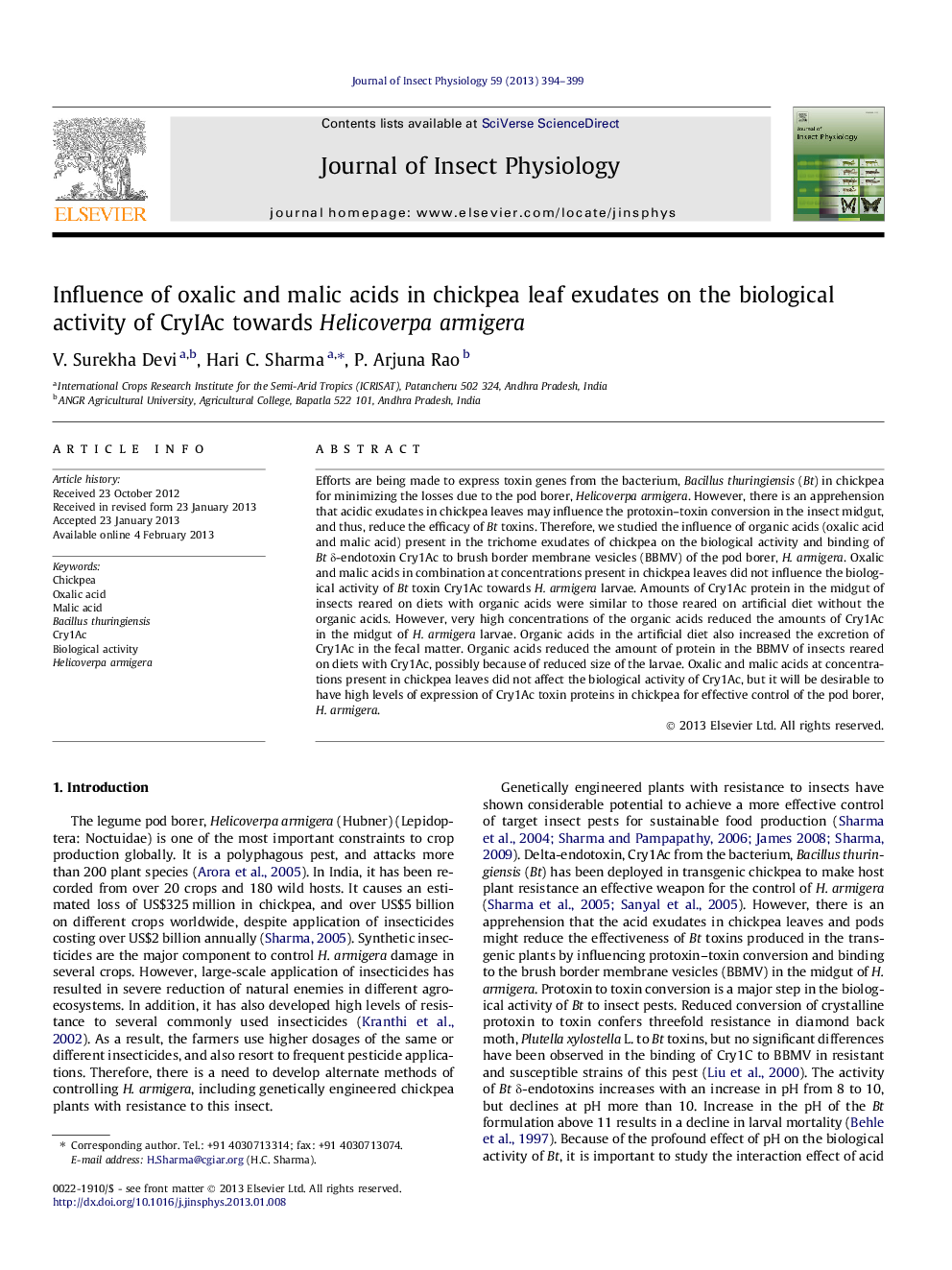| کد مقاله | کد نشریه | سال انتشار | مقاله انگلیسی | نسخه تمام متن |
|---|---|---|---|---|
| 5921904 | 1165337 | 2013 | 6 صفحه PDF | دانلود رایگان |

Efforts are being made to express toxin genes from the bacterium, Bacillus thuringiensis (Bt) in chickpea for minimizing the losses due to the pod borer, Helicoverpa armigera. However, there is an apprehension that acidic exudates in chickpea leaves may influence the protoxin-toxin conversion in the insect midgut, and thus, reduce the efficacy of Bt toxins. Therefore, we studied the influence of organic acids (oxalic acid and malic acid) present in the trichome exudates of chickpea on the biological activity and binding of Bt δ-endotoxin Cry1Ac to brush border membrane vesicles (BBMV) of the pod borer, H. armigera. Oxalic and malic acids in combination at concentrations present in chickpea leaves did not influence the biological activity of Bt toxin Cry1Ac towards H. armigera larvae. Amounts of Cry1Ac protein in the midgut of insects reared on diets with organic acids were similar to those reared on artificial diet without the organic acids. However, very high concentrations of the organic acids reduced the amounts of Cry1Ac in the midgut of H. armigera larvae. Organic acids in the artificial diet also increased the excretion of Cry1Ac in the fecal matter. Organic acids reduced the amount of protein in the BBMV of insects reared on diets with Cry1Ac, possibly because of reduced size of the larvae. Oxalic and malic acids at concentrations present in chickpea leaves did not affect the biological activity of Cry1Ac, but it will be desirable to have high levels of expression of Cry1Ac toxin proteins in chickpea for effective control of the pod borer, H. armigera.
Oxalic acid (OA) and malic acid (MA) at concentrations present in the chickpea leaves (0.20%) did not affect the biological activity of Bacillus thuringiensis toxin, Cry1Ac at the ED50 level to the larvae of Helicoverpa armigera. However, there was significant reduction in larval weights in diets with a very high concentration (0.44% OA and 0.94% MA) of the organic acids, with or without Cry1Ac. Highlights⺠Acid exudates in chickpea did not affect toxicity of Cry1Ac to Helicoverpa. ⺠High concentrations of organic acids reduced amounts of Cry1Ac in Helicoverpa midgut. ⺠Reduction in larval weights occurred in diets having organic acids, with or without Cry1Ac.
Journal: Journal of Insect Physiology - Volume 59, Issue 4, April 2013, Pages 394-399